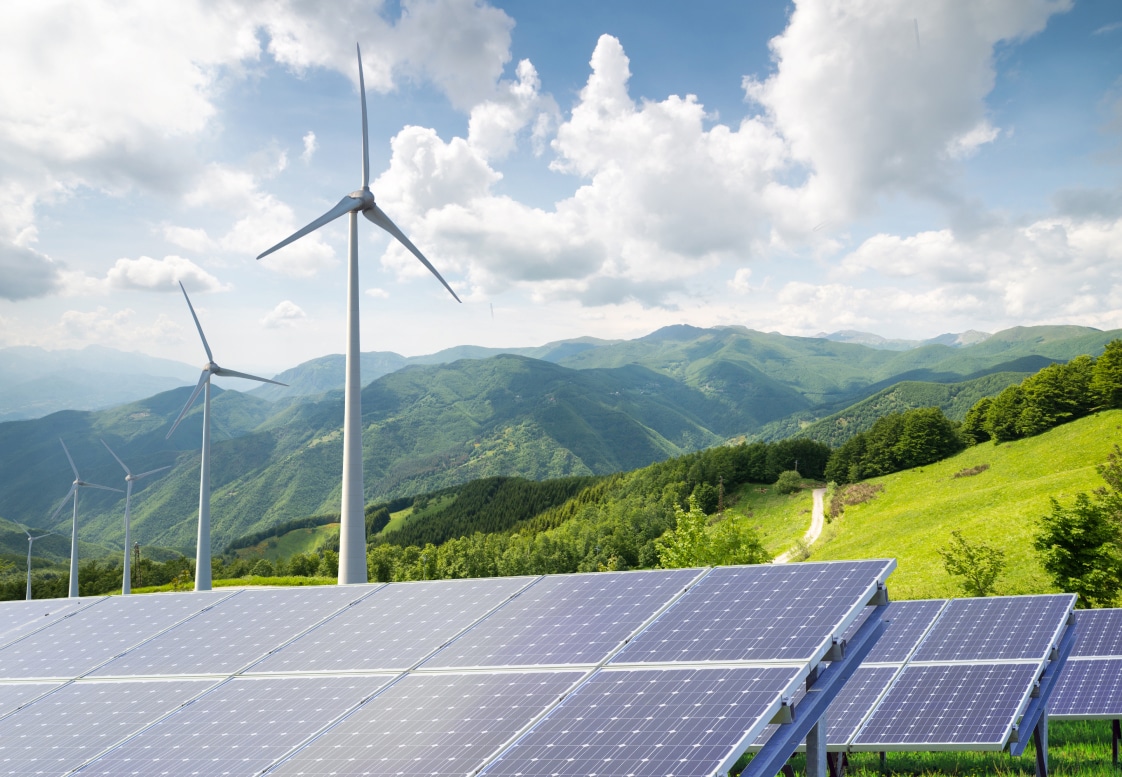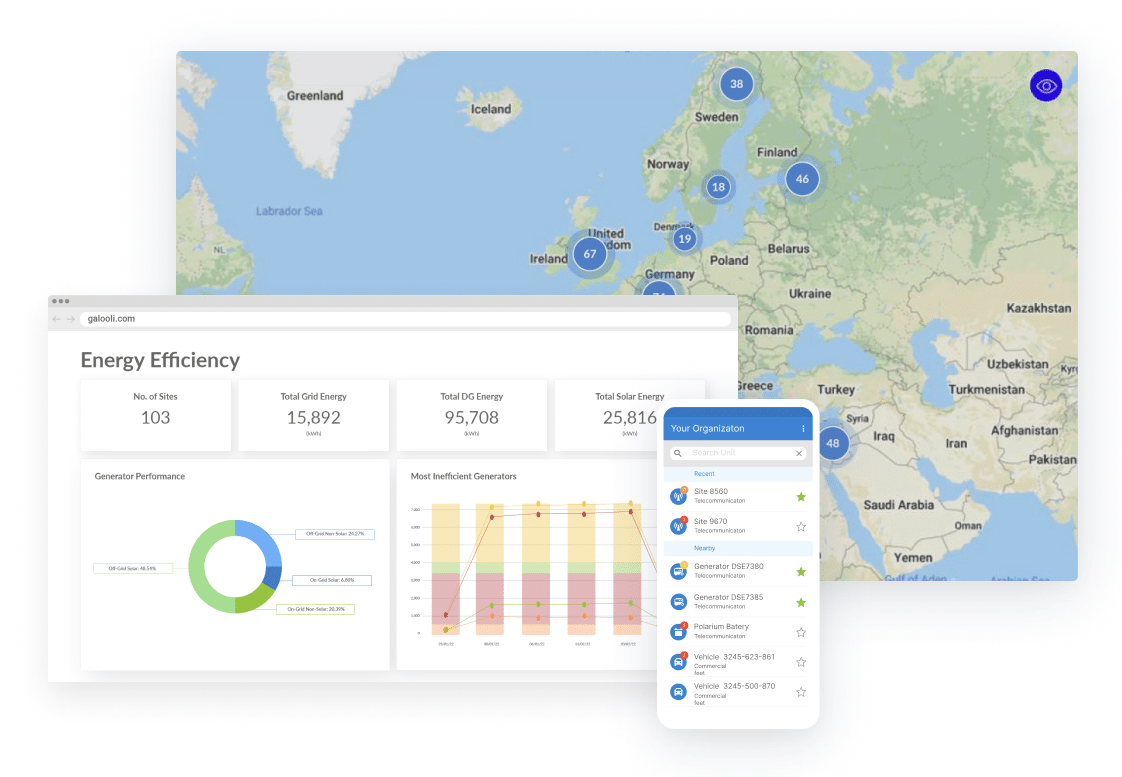The Complete Guide to Energy Efficient Microgrids

In 2023, the need for sustainable energy will be larger than ever. And now, communities and organizations worldwide are discovering the power of energy-efficient microgrids in the search for reliable and greener energy sources.
In recent years, power generation and storage technology advances have put do-it-yourself energy solutions within reach, giving users independence from the outages and inefficiencies associated with central grid systems.
When it comes to energy, few things matter more than keeping the electricity flowing and the lights on. From tropical storms in the Philippines to flooding in Sudan, there were more than 40 major international disasters in 2022.
Maintaining electrical power during crises like these is critical to saving lives and preventing worst-case outcomes. And for many around the world, the infrastructure that connects regions under threat to their central grid can be fragile.
In this guide, we’ll explain everything you need to know about setting up, operating, and maintaining an energy efficient microgrid.
What are microgrids?
A microgrid is a downscaled version of a traditional centralized power grid system. But microgrids can operate independently, providing power without being connected to any larger energy infrastructure.
You can use a microgrid to power anything from a single home to a large complex of multiple buildings, and they can be used as a backup or a primary power source.
How do microgrids operate?
There are many different types of microgrids. Some remain connected to a central grid, drawing power from it as needed, supplementing it with its own sources, and disconnecting to operate autonomously when the central grid is experiencing an outage.
Other microgrids, sometimes called “island” microgrids, are disconnected from any central grid and generate all the power they use independently. These microgrids often provide power in remote or hard-to-access areas, including actual islands.
The typical microgrid is based on several key components. First and foremost, microgrids require distributed energy resources such as gas-powered generators, fuel cells, wind turbines, or solar panels. The latter forms a popular type of microgrid; EV charging stations – otherwise known as solar stations.
Microgrids also need batteries to store energy so they can be saved up for later use and a load management system that can balance demand with generation and draw on stored energy as needed.
Finally, microgrids need control and communication systems to monitor performance, identify problems, and maintain security. Without real-time 24/7 visibility into a microgrid installation, you can’t guarantee it will be up and running when you need it most.
Microgrids, which can operate independently of central grids, have the potential to provide uninterrupted power when disasters strike. They can also be utilized in remote areas that are underserved by traditional energy providers, serving power to the nearly 775 million people currently living without electricity.
The other great advantage of microgrids is that they can be built with sustainability in mind. Microgrids based on renewable energy sources allow you to use cleaner, greener energy instead of relying on carbon-emitting fossil fuels.
Read our blog here to learn more about how microgrids are reshaping the energy industry.
Where are microgrids being used?
Microgrids can be used anywhere there is a need for self-sufficient, sustainable, uninterrupted power. Right now, there are about 4,475 microgrid projects in the world, and 160 of them are in the United States. Most of these are in Alaska, California, New York, and Texas.
Organizations, communities, and individual residences can all make use of microgrids. Here are just a few specific examples:
- Industrial facilities
- Corporate campuses
- Hospitals
- Government offices
- Remote settlements
- Tribal communities
- Intentionally sustainable neighborhoods
- EV Charging stations
In regions where fires, floods, and other natural disasters related to climate change are becoming more prevalent, microgrids can be a crucial element in a strategy to provide continuity of service. Microgrids reduce grid congestion and mitigate the risk that a single point of failure in a centralized grid will cause massive widespread downtime.
Microgrids designed to generate power using renewable sources can also drastically reduce carbon emissions that worsen climate change, making them a key part of any long-term plans to shift toward sustainable green energy.
For those looking for support throughout your microgrid project across these different forms, check out our blog on the top companies deploying microgrid solutions.
How do microgrids increase energy efficiency?
Microgrids have tremendous potential to increase energy efficiency through sustainable resources, localized infrastructure, and smarter load balancing. Microgrids can increase energy efficiency by as much as 60% when properly utilized.
Microgrid installations frequently use solar arrays, wind turbines, hydroelectric power, and other renewable, zero-emission energy sources. For some applications, generators powered by natural gas or diesel fuel may be necessary, but the grid can be configured to use renewable energy as much as possible and store surplus production in batteries for later use.
Energy efficiency is also optimized because microgrids are usually located close to the buildings that utilize the electricity they generate. The longer electricity has to travel, the more power is lost through the transmission lines. Heat energy from the microgrid’s energy assets can also be captured and put to immediate use instead of being vented into the air and wasted.
Microgrids can also be used as an alternative to central grid power during peak usage, reducing grid congestion and improving efficiency and reliability area-wide. Balancing loads for optimal efficiency and performance requires careful observation and the ability to make immediate adjustments, which is why remote monitoring and control systems are essential.
How to prepare for implementing a microgrid
The full development cycle for installing a microgrid generally ranges from 18 to 36 months.
Here’s a brief outline of the steps you’ll need to follow.
Planning Stages
When planning a microgrid, you’ll want to consider your financing options, the end users’ energy consumption patterns, and the specific energy assets and equipment you’ll use.
Renewable generators may require certain weather or geographical conditions to function well. If the microgrid needs to handle heavy loads or operate independently for long periods, you’ll need batteries and various distributed energy resources.
Installing
Before you get to work, you’ll need to ensure you have all the required permits and approvals. Hiring professional installers and electricians is essential to make sure the initial setup is done right.
Maintaining the Microgrid
Your microgrid will require regular care and maintenance throughout its entire lifespan. The equipment will need to be cleaned and serviced as needed, and all vital components must be inspected routinely.
Remote control and monitoring solutions, like Galooli, can serve an important role here, giving you constant visibility into the performance of your microgrid and helping you identify potential problems as early as possible.
Remote site management can save you money and extend the life of your assets by enabling you to address performance issues sooner while reducing the overall frequency of on-site visits.
Tips for using a microgrid
You always want to make sure your microgrid is up and running when you need it most, during adverse conditions, and when the central grid is experiencing outages. Here are some tips for maximizing its resilience and performance:
- Protect your resources and equipment with reinforced structures that provide shelter from rain, high winds, and flooding.
- Regulate the heat and cooling systems at the site to ensure that your energy assets are maintained at the optimum internal temperature and are never in danger of freezing or overheating.
- Minimize damage from lightning strikes by following all applicable codes and standards, using surge protectors, and grounding your assets.
- Use automation and remote control solutions to shift loads and maintain system stability.
- Implement remote monitoring and security systems to prevent theft and vandalism at the site.
Future-proof your energy with microgrids
Microgrids are likely to play a critical role in the future of sustainable energy distribution. While large centralized grid systems aren’t going to go away anytime soon, microgrids present us with a viable alternative that can reduce demand during peak load times, decrease the harmful emissions caused by fossil fuels, and provide greater efficiency and cost savings to businesses, communities, and local governments.
To obtain the highest levels of energy efficiency from a microgrid, you need 24/7 visibility and the ability to respond immediately to performance and maintenance issues.
Galooli offers a remote site management solution that allows you to identify and address problems and inefficiencies as soon as they manifest.
To find out how Galooli can help you make your microgrid as efficient and reliable as possible, click here to try a free demo.
Connect With Us
operational cost savings & efficiency?


























